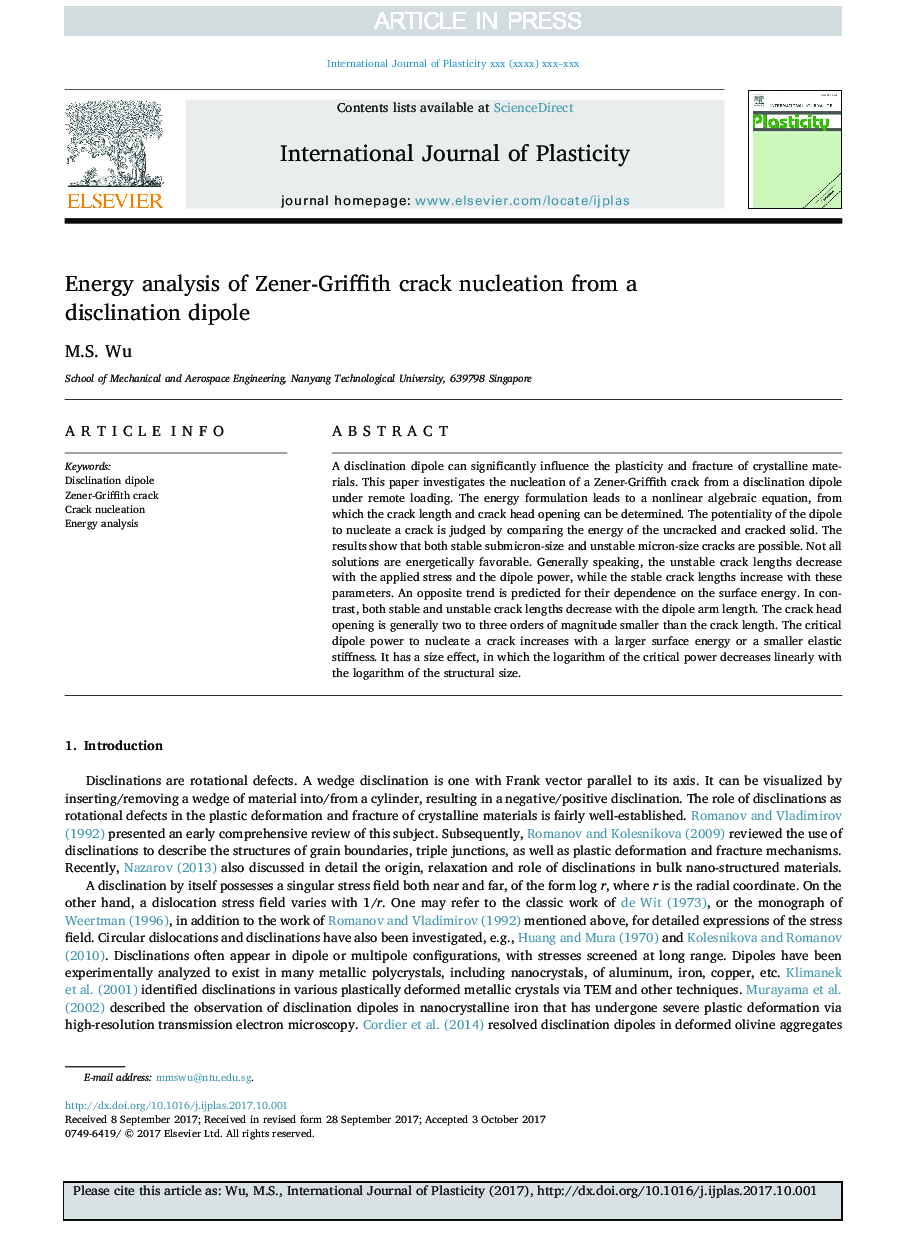| Article ID | Journal | Published Year | Pages | File Type |
|---|---|---|---|---|
| 7174876 | International Journal of Plasticity | 2018 | 14 Pages |
Abstract
A disclination dipole can significantly influence the plasticity and fracture of crystalline materials. This paper investigates the nucleation of a Zener-Griffith crack from a disclination dipole under remote loading. The energy formulation leads to a nonlinear algebraic equation, from which the crack length and crack head opening can be determined. The potentiality of the dipole to nucleate a crack is judged by comparing the energy of the uncracked and cracked solid. The results show that both stable submicron-size and unstable micron-size cracks are possible. Not all solutions are energetically favorable. Generally speaking, the unstable crack lengths decrease with the applied stress and the dipole power, while the stable crack lengths increase with these parameters. An opposite trend is predicted for their dependence on the surface energy. In contrast, both stable and unstable crack lengths decrease with the dipole arm length. The crack head opening is generally two to three orders of magnitude smaller than the crack length. The critical dipole power to nucleate a crack increases with a larger surface energy or a smaller elastic stiffness. It has a size effect, in which the logarithm of the critical power decreases linearly with the logarithm of the structural size.
Related Topics
Physical Sciences and Engineering
Engineering
Mechanical Engineering
Authors
M.S. Wu,
